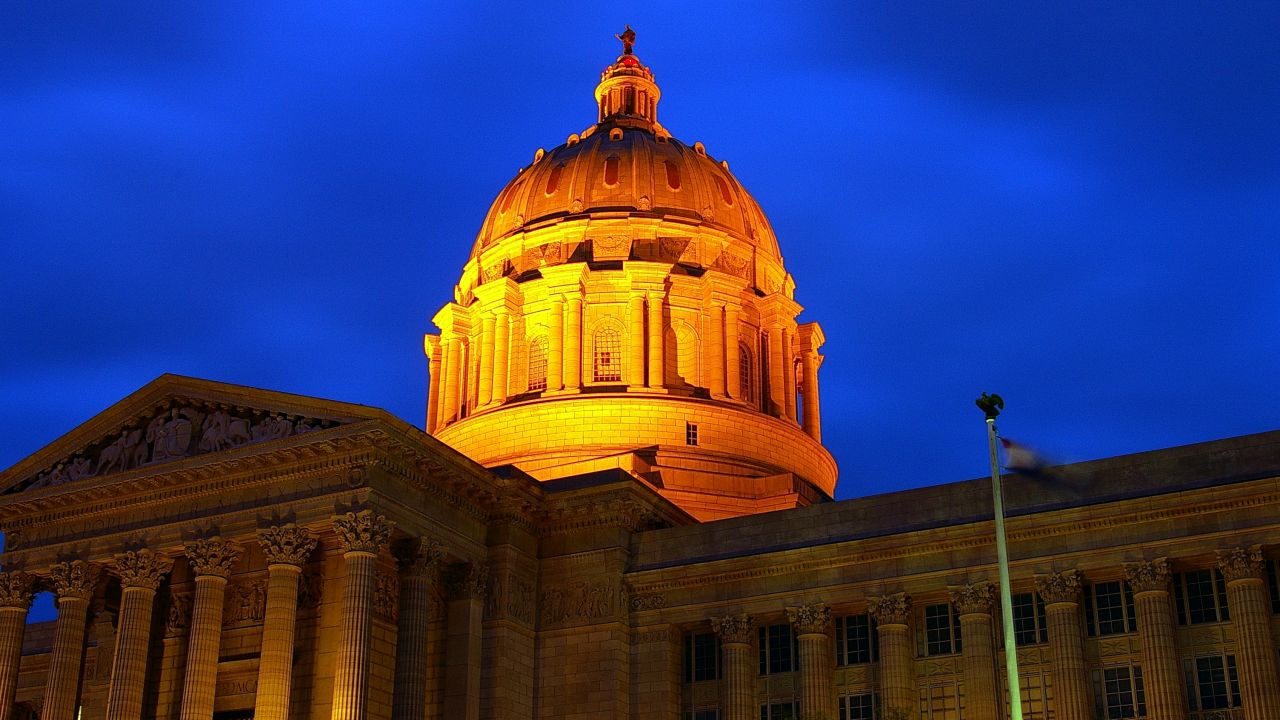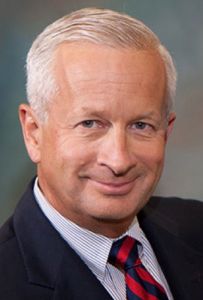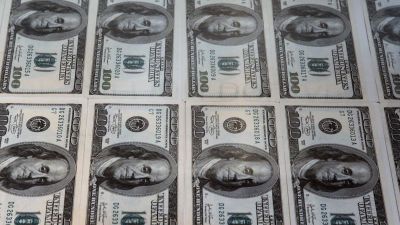
The Missouri State Capitol building. (B, K & G/Flickr cc 2.0)
Multimillionaire John Brunner is a victim of money in politics. In 2012, he spent millions to win the Republican nomination for US Senate in Missouri and was defeated, in part because Democrats, in the words of Sen. Claire McCaskill, the incumbent who was up for re-election that year, “spent more money for Todd Akin in the last two weeks of the primary than he spent on his whole primary campaign.” McCaskill and her allies rightly calculated that Akin, an outspoken conservative congressman who shortly after his nomination made headlines with his views on “legitimate rape,” would be easy to beat. He was.

John Brunner
Four years later, Brunner set his sights on the Missouri governor’s mansion. The heir to the family soap company Vi-Jon (named by and for his grandparents, Violet and John), Brunner had money to burn. His primary campaign ended up raising $8 million, $7 million of which came from Brunner himself. Again Brunner lost, but not because money doesn’t talk in Missouri.
In fact, his primary opponents all also had money to burn, even if it wasn’t their own. In Missouri, a state where there is currently no limit on how much a donor can give a candidate, multimillionaires and groups with names designed to mask their interests underwrote a crowded field. The candidate who ultimately won, first-time politician Eric Greitens, relied on $2 million from donors who had also given to a veterans’ charity, The Mission Continues, that Greitens founded — a degree of coordination between charity and candidate that, the AP reports, may violate IRS law.
Welcome to a world of political money that’s getting little attention as the nation focuses on the luridly entertaining presidential race. According to the latest figures compiled by the National Institute of Money in State Politics (NIMSP), a small Montana nonprofit that keeps the most extensive public records of spending in state and local races, donors have poured more than $1 billion into state and local races so far this year.
While the lack of focus on this otherwise eye-popping number may seem understandable, given that fundraising by the presidential candidates hit the billion-dollar mark in April and US Senate and House races, when combined, reached it in June, it’s worth considering that the further you go down the ballot, the less it costs to make a big impact.
According to a NIMSP analysis of states that held contests in 2015, the average cost of a state Senate seat in Virginia (the most expensive state on the list) was about $500,000. For a House seat, the figure was $169,000. Add to that the fact that the number of reporters covering local news is dwindling — news organizations aren’t spending as much time covering the ins and outs of contests for the state legislature or judicial seats — and a little money can go a long way toward influencing an election’s outcome.
And NIMSP’s current tally for money raised in state and local elections lowballs the actual bottom line. It’s not completely current: State campaign finance deadlines vary widely, and it takes time for the NIMSP to tally the numbers. Moreover, if history is any guide, hundreds of millions more in donations will pour in between now and Election Day. In a blog post for the Institute, Calder Burgam notes that in 2012, one-fifth of the donations to state politicians came in October alone.
So far the price tag for the Missouri governor’s race is at $50 million, more than twice what it cost in 2008, the last year Missouri had limits on campaign donations. In the GOP primary, Brunner’s opponents, in addition to Greitens, included:
- Former Missouri House Speaker Catherine Hanaway, who pulled in million-dollar donations from two Orwellian-named conservative political groups, Grow Missouri and Missourians for Excellence in Government, and from multimillionaire Rex Sinquefield, a libertarian ideologue who has in the past funded both of those organizations.
- Lt. Gov. Peter Kinder, who as backed by anti-union businessman David Humphreys, one of the state’s biggest donors (second only to Brunner himself) who so far this year has poured $4.5 million into Missouri elections.
During presidential election years like this one, political organizations, corporations and unions tend to exert greater influence; as the chart below shows, a larger proportion of donations comes from individuals (as opposed to these groups) during off-year elections.
Republicans also tend to dominate state election spending. In Missouri legislative races, for instance, Republicans have outraised Democrats by 2-to-1. In nearby Iowa, a state where both chambers of the state legislature could swing one way or the other, donors are giving to both parties — though a sampling of Federal Communications Commission records compiled by the Center for Responsive Politics for BillMoyers.com indicates that Republicans are being more aggressive in their buys of TV ads.
One prize that goes to the party that wins state legislative and gubernatorial races is the opportunity to redraw US congressional and state legislative lines in the decennial redistricting that will follow the 2020 Census. In most states, the party that controls the state legislature gets to gerrymander district lines in a way that gives it the most seats. Republicans, historically, have had a better understanding of the potency of state government — where district lines get drawn and the policies that effect people’s lives get made — and made a concerted effort to win state races. That investment has paid off; the GOP now controls both chambers of the state legislature in 30 states. In 23 of those, there is also a Republican governor to sign off on legislation.
State limits on campaign donations don’t mean an inexpensive election. North Carolina, which does cap donations, is also seeing money pour into its gubernatorial race. Republican incumbent Pat McCrory is facing off against Roy Cooper, who has been the state’s Attorney General for 15 years. So far, McCrory has reported raising $8.5 million to Cooper’s $12.5 million. The candidates’ fundraising is inhibited by the fact that the Tarheel State, unlike Missouri, does have some spending limits: Individuals can only contribute $5,000 to a candidate per election, and corporations and unions cannot give to candidates. In the post-Citizens United world, however, there are a host of dark money groups and super PACs active in the state seeking to influence the election, and recent protests following the state legislature’s voter suppression and anti-LGBT laws have drawn national attention — and out-of-state money — to North Carolina.
Judicial races also are attracting major money. Candidates in states that elect their judges have raised $18 million so far. Louisiana, Wisconsin and Texas’ judicial races have each broken $2 million and Ohio is nearly there. In Texas, which is holding the most expensive judicial race in the country, the major donors are all law firms who hope to influence the kind of justice their clients will see handed down from the bench.




